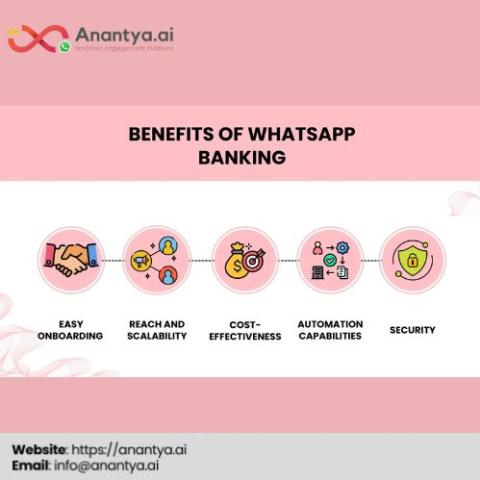The financial market today is more fluctuating, and this puts pressure on corporate and financial organizations to deliver smooth customer experience to achieve operational excellence. Traditional banking models that maintain branches and manual procedures do not perform well in the current dynamic financial system.
A branchless banking solution can redefine your bank with its innovative features. With the help of a branchless banking solution, you can overcome most of the barriers that are associated with the traditional banking system. Besides, you can experience reduced operating costs and improved customer experience.
In this blog, let’s discuss how the branchless banking model operates, its advantages, and how it solves some of the most critical issues related to traditional branch-based banking.
An Overview of Branchless Banking System
A branchless banking system means providing various financial services and products without the need for a physical branch network. However, it offers digital transformation, third-party agents, mobile applications, eKYC solutions, and many more to offer a better banking experience. To financial institutions, this approach makes service delivery easier and extends it to more areas, including the underbanked ones.
How Branchless Banking Can Overcome the Challenges of Traditional Banking
Traditional banking faces several challenges, from high operational costs to limited accessibility. Here’s how branchless banking solutions address these issues:
1. Reducing Operational Costs
Operating physical bank branches is costly since it involves rent, energy, employees, and general building expenses. To financial institutions, such expenses are costly in the sense that they reduce on the overall profits due to low traffic or even in rural areas.
Branchless banking means the absence of distinct branches of offices. As with some of the solutions such as mobile banking applications or agents, customers are easy to serve without incurring intense costs, hardware or building construction for the branches. These funds can be channelled into research and development and upgrading of customer services.
2. Enhancing Accessibility
The major disadvantage of traditional banking is that it has a poor branch network, especially in the rural or regional centres. Expansion into such areas may be unprofitable because of the low density of population or lack of development of infrastructure.
The biggest benefits of branchless banking is that they dismantles these hurdles through technology and agents. With the help of banking apps, USSD, and internet banking, the customer can avail services at any time from any location. These increased accesses assist the financial institutions to penetrate fresh markets thus propelling financial inclusion.
3. Streamlining Customer Onboarding with eKYC Solutions
Customer onboarding in traditional banking is often a tedious, paper-heavy process. These factors mean long verification procedures, compliance issues, and other bottlenecks which result in bad customer experience and higher rates of dropout.
In branchless banking, eKYC solution change the way people sign up. Through the automation of such verifications, eKYC uses biometric scans, face recognition, or digital identification for instant customer identification. This not only cuts down the amount of time it takes to onboard individuals, but also local regulatory Know Your Customer (KYC) requirements.
4. Improving Customer Convenience
In traditional banking systems, customers usually have to go to a branch during some certain time of the day to conduct very simple tasks such as checking account balances, making transfers or applying for loans. This absence of flexibility is difficult for many to deal with.
Branchless banking leaves the decision making powers of financial services with your customers as a welcome tradition. It also enables customers to conduct transactions or solve problems through mobile applications, chatbots, self-service terminals and kiosks. Therefore, for banks, it is interpreted as increased customer satisfaction and, thus increased customer loyalty.
5. Enabling Scalability for Businesses
Expanding operations in traditional banking always requires branching out, and this process takes ample time and a lot of money. This model is bad for fast growth.
Branchless banking is exactly what we have been looking for as it is a highly scalable model. Given the nature of the digital mobilization, financial institutions are also able to overspread the services they offer rather cheaply and efficiently. From entering a new geography or expanding your services portfolio, branchless banking systems integrate seamlessly with your growth plans.
6. Adapting to Regulatory Changes Efficiently
The rules and regulations are complex and ever-changing a factor that makes it daunting for any financial institution to deal with. The traditional models may need a manual update and Live employee training, which is a very tedious process and may enlarge the project’s cost.
Systems used in branchless banks are brought up to date in real-time and also contain auto-compliance features. For instance, eKYC solutions mean that your onboarding solutions will continue to resonate with the newest regulations. By so doing, the management of compliance matters becomes flexible, and this results to decreased compliance costs to the business as well as smooth running of the corporate enterprise.
7. Reducing Environmental Impact
Sustainability is steadily emerging as an essential consideration for any firm and even financial companies. The present traditional banking has many disadvantages as it uses a lot of paper and has heavily built buildings.
However, branchless banking has a lesser impact on this by automating most processes and even utilizing materials and resources less than a branch banking system. It must be understood moving to a branchless model helps the environment while adding to your image as a socially conscious organization.
Conclusion
Branchless banking is no longer just an alternative; it’s the future of the financial industry. The benefits of branchless banking are unmatched, as it overcomes traditional banking’s challenges of high costs, limited accessibility, and slow processes. From significantly reducing operational expenses to implementing easier and more efficient customer identification through eKYC solutions, this model enables you to deliver superior services while maintaining competitive rates.
For banks, financial institutions, and businesses operating in the financial sector, branchless banking presents a valuable opportunity to innovate and diversify. By adopting this transformative approach, you enhance customer experiences and position your brand at the forefront of the rapidly evolving global financial services market.















